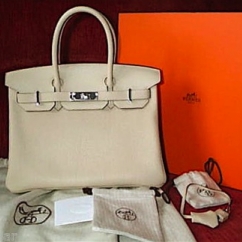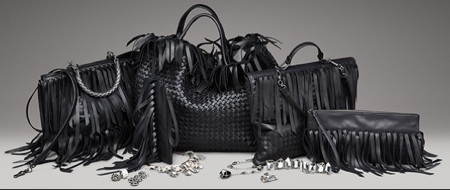Articles and News
EDITORIAL: JUST BE YOURSELF! | April 10, 2013 (0 comments)

Merrick, NY—Your mother was right. Be proud of who you are and don’t try to copy someone else’s style. Let’s look at two retail versions of this lesson: one, the rocketing success of über-high end luxury brands; and two, what happens when you grossly misread your customers.
First let’s look at the high end. Despite economic turmoil in Europe, a slow recovery in the United States, and a cooling off of super-hot China, ultra high-end global brands not only continue to do well; they’re significantly outperforming the category.
French-based Hermès is one brand that has never succumbed to the temptation to democratize its luxury wares to reach a wider audience. Now, Italy’s Bottega Veneta also is reaping the rewards of refusing to bow to commercial pressure. So are French-based Chanel and Céline, the latter of which has been transformed from moribund to the newest must-have brand for the hip, affluent fashionista.
According to this article in the Financial Times, Bottega Veneta’s income grew 47% in 2012. Despite the economic crisis still holding Italy in its grasp, Bottega CEO Marco Bizzari predicts this year will again bring growth far above the 8% forecast for global luxury goods.
Like Hermès, Bottega prides itself on rare craftsmanship—it takes an artisan 15 years to learn how to make its signature leather weave—and on never discounting. Unlike Louis Vuitton, which offers its “Speedy 25” bag for $855, there’s no entry level Bottega bag, just like there is no entry level Kelly or Birkin bag (shown top of page).
Some of Bottega’s small casual bags can be had for $1,250, but a basic, nappa leather version of its larger totes starts at around $3,500 and a crocodile skin version costs as much as €52,000 ($67,620). That’s a price tag most luxury jewelers would like to sell as often.

It takes Bottega Veneta artisans up to 15 years to learn to make its signature woven leather, shown here in a collection of fringed bags. A crocodile version of this bag can cost more than $60,000. (Image: Bottega Veneta website)
These ultra-high priced bags are enjoying record sales even as other famous luxury purveyors like Tiffany and Burberry struggle with faltering sales. Why? Luca Solca, head of luxury goods research at Exane BNP Paribas, told FT, “There is a sophisticated consumer out there begging to pay more in exchange for exclusivity and distinction.”
At the other end of the spectrum, news broke Monday that Ron Johnson, the much-touted former Apple Retail whiz hired to transform JC Penney is out as CEO. His predecessors in the position, Allan Questrom and Myron “Mike” Ullman, were credited, respectively, with first keeping the retailer out of bankruptcy, then modernizing it and restoring it to solid footing, according to Women’s Wear Daily. (Ullman is back as CEO following Johnson’s abrupt departure.)
Johnson’s much-heralded appointment was supposed to take the retailer to the next level. Unfortunately, he took it down, not up.
Johnson’s idea—not surprising, given his Apple pedigree—was to wean Penney’s off discounts and couponing, and move to an “everyday value” price strategy. Via a series of shop-in-shop branded boutiques, including plans for one in conjunction with luxury watch purveyor Tourneau, he sought to inject some of Apple’s cool, thereby justifying the no-discount strategy.
But Penney’s isn’t Apple, and “everyday low price” doesn’t work for a department store whose customers respond like Pavlov’s dogs to discounts and sales. Johnson completely miscalculated how much value the thrill of the hunt has. Buying a $25 sweater isn’t nearly as much of a rush for the midmarket customer as snagging a $50 sweater with a 50% off coupon.
While Penney’s has some great designer co-branding deals, so do competitors Kohl’s and Macy’s, so it’s hardly unique in that respect. And both Kohl’s and Macy’s have the frequent sales and coupons customers want.
Penney’s misstep wasn’t in trying to amp up the cool factor. Even affluent customers who can afford a Bottega bag will mix it with cheap chic finds. But Penney’s can’t survive on the few times a high-low customer might wander in, and it can’t survive if its core customer is going to turn up her nose without a coupon.
Über-luxe brands like Hermes and Bottega are famous for never having a sale. High-end retailers like Nordstrom and Neiman Marcus can get away with only an occasional sale; i.e. clearing the racks at season’s end. Wal-Mart has the muscle to offer everyday low prices.
But Penney’s can’t. Being neither luxury nor low-end, the best thing it can do is figure out how to do the retail equivalent of a style makeover: be itself, only better.
Top image: Modelsdesign1.blogspot.com







